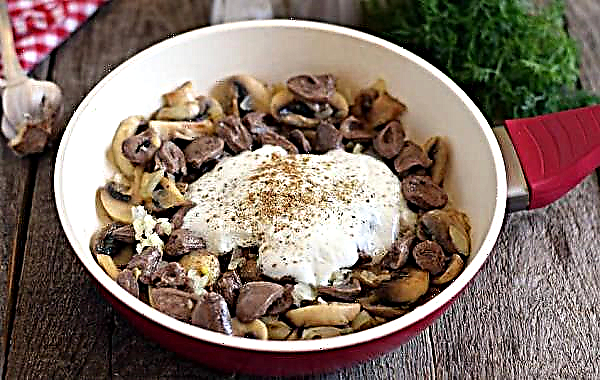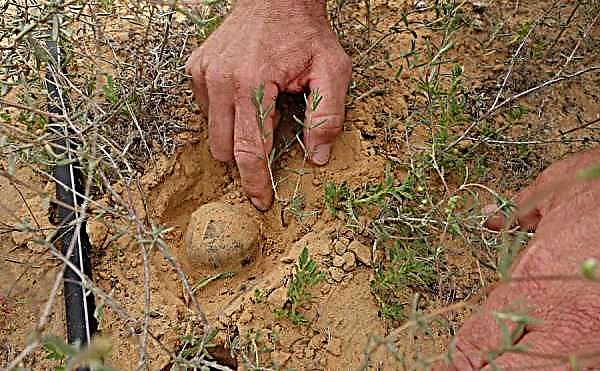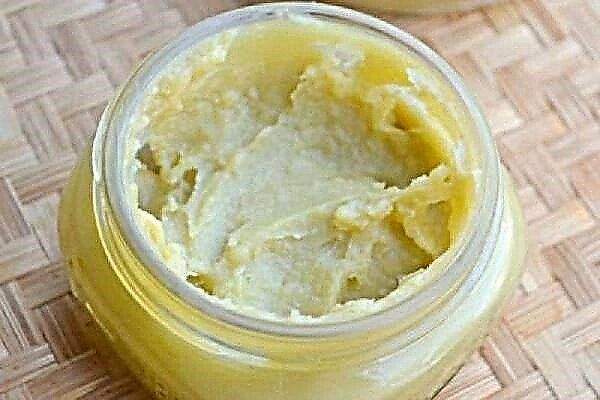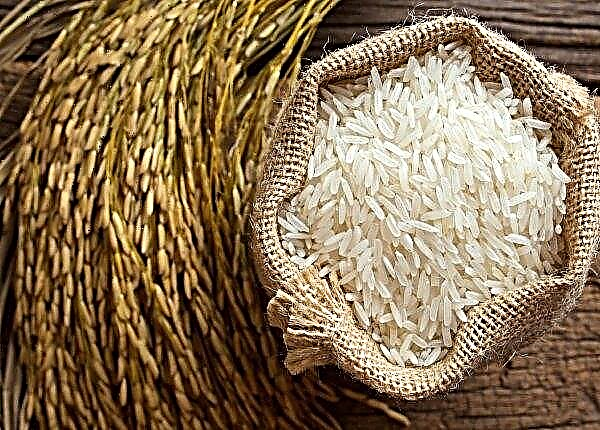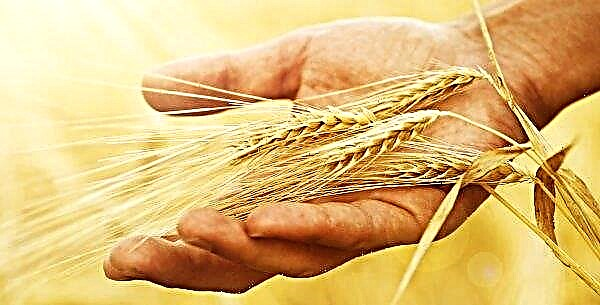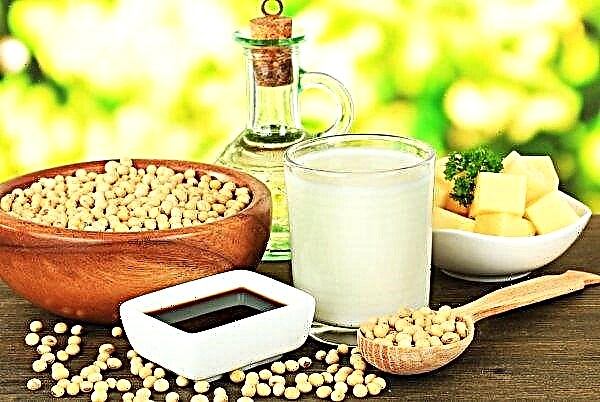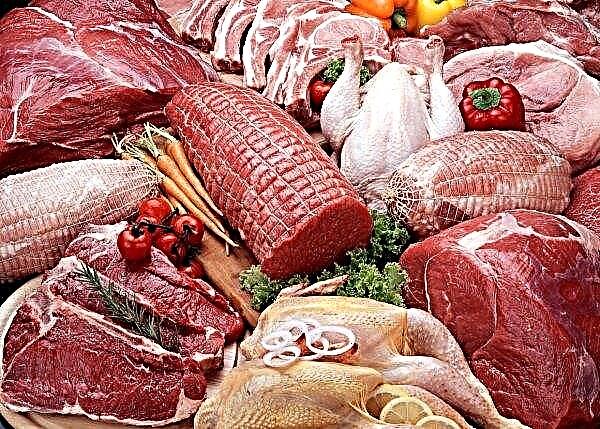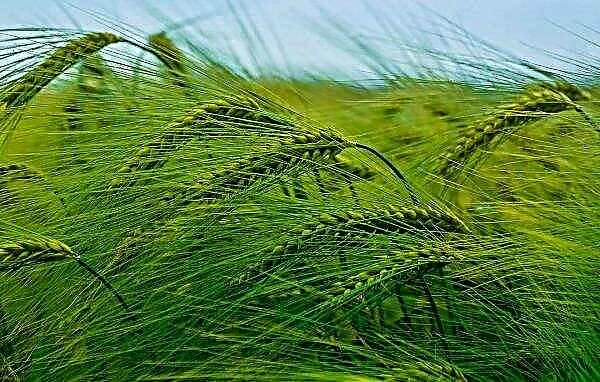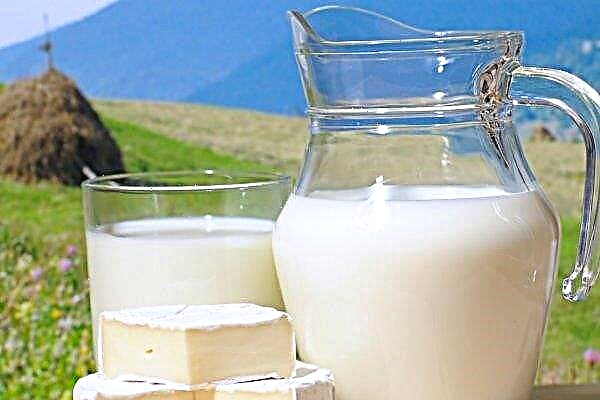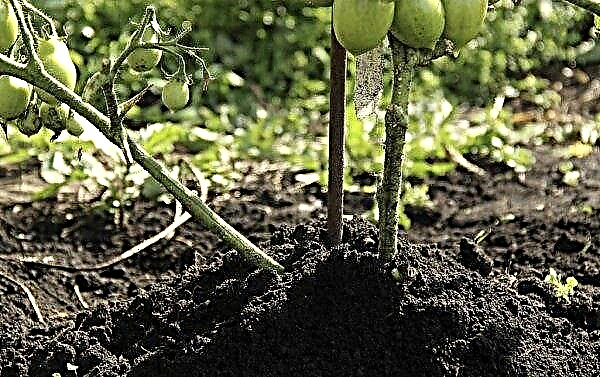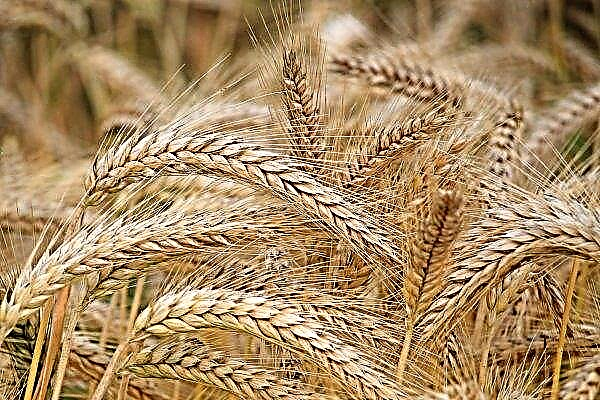Bright flowers of geraniums have always been considered a symbol of warmth in the house, and it is not surprising, because it comes from hot Africa - from those parts where two oceans merge together. It is there, on the Cape of Good Hope, that every summer bright bonfires of blooming pelargonium, the progenitor of the famous royal geranium, flash, which will be discussed in our article. Consider how to make geranium please its owners with wonderful flowers from year to year.
Botanical description of the plant
The plant is popularly called royal geranium, although it belongs to the genus Pelargonium of the Geranium family of the Rosid subclass. He has a lot of alternative names: home pelargonium, large-flowered, English, noble. Derived artificially and descended from the pelargonium of a closed leaf (hood geranium). This is a potted plant, but in mild climates it can grow to large bushes. From other representatives, this geranium differs in the shape and structure of the flower, as well as the splendor and arrangement of inflorescences (not above the bush, but flush with the leaves). It blooms when warmth comes - from about April to August. The table below gives a brief description of the main morphometric parameters.
This is a potted plant, but in mild climates it can grow to large bushes. From other representatives, this geranium differs in the shape and structure of the flower, as well as the splendor and arrangement of inflorescences (not above the bush, but flush with the leaves). It blooms when warmth comes - from about April to August. The table below gives a brief description of the main morphometric parameters.
| Parameter | Description |
| Root system | Fibrous |
| Stem | Erect, dense, almost completely hidden under the leaves |
| Leaf shape | Simple, lobed, with a wavy, sometimes serrated edge |
| Leaf color | Green |
| Flower shape | Large (usually from 4 to 7 cm), most often terry, are collected in umbrella-shaped inflorescences. Irregular, zygomorphic with only one plane of symmetry. The flower has a long nectariferous spur fused with a peduncle |
| Flower color | Various: white, pink, red, lilac, maroon, violet. Dark veins and spots are characteristic |
| Taste of Flowers | Bitter, with a fruity mint and rose scent |
| Fruit shape | A long, narrow box with sepals, similar to a bird's beak (hence “pelargos”, in Greek - “stork”) |
| Fruit color | Green, ripe brown. |
Main varieties
Over the centuries of cultivation, more than a thousand varieties have been bred, and their classification is rather confused. So, flower growers do not agree whether to attribute the famous species “angels”, which appeared as a result of crossing the royal and curly pelargonium, to large-flowered ones, or still consider them a separate species. In addition, sandy flowers pelargoniums, often classified as Pelargonium domesticum, were actually bred by crossing “angels” and royal ones.
Did you know? Geranium flowers are used in cooking. They are sugared, added to compotes and desserts.
One way or another, most often distinguish several groups of these plants (actually royal, "angels", sandy flowers), which differ from each other in the shape, size and color of the petals, as well as resistance to environmental influences. Each group includes many varieties. Consider the most popular of them.
Royal Pelargonium:
| Grade | Color of flowers, salient features |
| White glory | White without veins and spots |
| Rimfire | Maroon with dark veins |
| Margaret soley | Large (6 cm) light red |
| Joy | Red-pink, reminiscent of primrose |
| Black prince | Dark plum with silver border |
Representatives of the Angels group (fragile-looking mini-varieties with fragrant foliage and short flowering time):
| Grade | Color of flowers, salient features |
| Spanish angel | Purple, 3–3.5 cm in diameter |
| Imperial butterfly | Pretty large white with wine-red blotches, leaves with citrus aroma |
| Tip top duet | Upper petals dark raspberry, lower pale lilac. It differs in early and rather long flowering |
| Pac angeleyes viola | White with a touch of pink, leaves with a citrus aroma. |
Representatives of the sandy flowers group (hardy varieties that feel good in the open ground) include:
- light pink with dark spots Cambi (Bicolor);
- dark cherry Camred;
- Camdared with their petals painted bright red inside and paler on the outside.
Did you know? One of the Angels' varieties is PAC Angeleyes Orange Paccrio with orange flowers and a carrot-like leaf smell.
Conditions for successful growing at home
Royal pelargonium is quite finicky and requires special care and knowledge of the subtleties of cultivation. Otherwise, it simply will not bloom.
Lighting
Royal Pelargonium loves the light - without adequate lighting, it stretches out in length, becomes unaesthetic and loses immunity. She does not fit windows facing north or obscured by trees. It is optimal to place the plant on the windowsills of the southern windows, turning several times a week at a small angle relative to the window.
Important! Direct sunlight is dangerous for this type of geranium. In the summer, during the hours when the sun is especially active, you can cover the windows with tracing paper or floral film.
Temperature
The maximum temperature in summer is 24 ° С, in the autumn the temperature begins to gradually decrease, and in winter, when buds are planted, it reaches 12–15 ° С. To maintain such a temperature regime, you can position the plant on an insulated terrace or balcony.
Air humidity
Excessive dampness should not be allowed - this can cause fungal diseases. In addition, good ventilation is necessary to avoid stagnant air. At the same time, drafts are undesirable.
Home Care
Having provided the necessary conditions of detention, you can proceed to care activities.
Watering
The watering regime depends on the time of year. In summer, it is necessary to water abundantly 2 times a day with settled water at room temperature, but do not overdo it: water stagnation is unacceptable. Royal pelargonium does not require spraying leaves with water. For watering, experienced gardeners recommend using a pallet, then the geranium itself absorbs the required amount of water with the roots. In winter, watering is reduced.
Top dressing
During irrigation, it is fed every 2 weeks with special liquid complexes for ornamental plants (nitrogen-potassium-magnesium), at the beginning of the growing season, introducing additional potassium for better tying the kidneys. The folk method of feeding consists in diluting a drop of iodine in a liter of water and carefully pouring this solution over the walls of the pot. With top dressing, do not overdo it - this leads to burns and yellowing of foliage.
How and when to crop
Florists who have never had business with royal geraniums traditionally (and erroneously) cut it in the spring, but this can lead to incorrect shoot formation. The best time to trim in this case is the beginning of September. For lush flowering and less trauma to a noble plant, pruning must be done in 2 stages.
The interval between procedures is about a month. First, dry and excess stems are removed (about a third), and the second step is to pinch the formed young shoots, stimulating the active growth of new ones. When trimming, you must remember to use a sanitized tool and treat the slices with activated carbon.
Transfer
To maintain the decorative properties of geraniums, every 2-3 years it is advised to transplant. It is produced when the roots of the plant begin to peek through the drainage hole. The optimal time is from late January to March, when geranium wakes up after wintering, but is not yet preparing for flowering. A not too spacious pot is used, otherwise all growth will go to greenery, and there will be no flowers.
Recommended Reading

The transplant process is as follows:
- Geranium is watered abundantly to make it easier to get out of the pot.
- The plant is taken out with a lump of earth and placed in a new pot.
- The voids between the tank and the plant are filled with moistened soil (peat and sand mixed in equal proportions or peat and perlite).
- At the bottom of the pot, drainage holes and a layer of expanded clay or small pebbles are required.
Features of winter care
The geranium spends the autumn-winter period in hibernation, which determines the specifics of caring for it in the cold:
- For sufficient lighting, luminescent phytolamps are used.
- The air temperature drops to the already mentioned 12-15 ° С.
- Mineral top dressing is stopped.
- If geraniums were planted in the garden for the summer (this is most often practiced with sandy flowers), they are not left there for the winter, especially in the middle lane.
- Watering is reduced, focusing on the state of the earthen coma - it should not be dry.
Breeding
All flower growers are interested in the reproduction of the royal pelargonium, because such beautiful flowers necessarily require reproduction. There are two breeding methods that have their advantages and disadvantages.
Cuttings
It is produced by rooting the cuttings, which are taken no earlier than the end of January - then the level of growth hormone rises, but no later than March - in the spring, budding of the kidneys already begins. It is recommended to immediately use separate pots with drainage holes. After cutting, the edges of the cuttings are treated with activated carbon powder, dried and planted in the ground (the same mixture is used as for transplantation). Young plants are kept in a moderately warm room (19–22 ° C), not forgetting watering, and are fed twice a month with mineral complexes with a reduced nitrogen content (so that there are fewer leaves and more flowers). Pincing (removal of apical buds) is done for the first time after a few weeks over the third pair of leaves and stops when the pelargonium acquires the desired shape and bushiness.
Young plants are kept in a moderately warm room (19–22 ° C), not forgetting watering, and are fed twice a month with mineral complexes with a reduced nitrogen content (so that there are fewer leaves and more flowers). Pincing (removal of apical buds) is done for the first time after a few weeks over the third pair of leaves and stops when the pelargonium acquires the desired shape and bushiness.
Seed cultivation
Propagation by seeds is not a very successful method specifically for this type of geranium, primarily because it is difficult to find high-quality seeds in domestic stores. In addition, with this type of reproduction, such a sign as terry flowers is almost not transmitted.
If the grower still decides to sow Pelargonium domesticum, it is better to do this in winter. The air temperature in the room should be at least 20 ° C, the soil in the box with seedlings is kept moist. Shoots usually appear in the 3rd week. After this, the seedlings are transferred to a temperature of 15 ° C and, with the appearance of the first leaves, are planted in pots, not forgetting the tweezing.
Growing difficulties
As we have already seen, caring for noble pelargonium has many nuances, non-observance of which leads to diseases and pest damage. Consider possible problems and how to deal with them.
Does not bloom
Most often, gardeners are concerned about this question: why, even with seemingly proper care, pelargonium does not bloom and what to do about it. You can answer it like this:
- One reason may be the composition of the soil. If the soil is exclusively peaty, it does not allow air to pass through well and retains moisture too much. Therefore, the composition of the soil must necessarily include sand.
- Still very often, the owners of pelargonium literally fill them with water, which can not be done, because this leaves the leaves yellow and flowering stops.
- Too large, spacious pots allow the root system to develop at the expense of flowering.
- Pest infection also negatively affects decorative functions.

Disease
The most common disease these plants are susceptible to is the black leg. The reasons for it lie in the infection with the Pythium fungus due to improper care: too cold a room, large pots, excessive watering. A characteristic feature is the blackening of the stems.
It is practically useless to treat a plant, it is better to attend to its over rooting. Yellowed foliage can be a sign of not only too plentiful watering, but, paradoxically, insufficient watering, small pot sizes, small or, conversely, excessive feeding.
Important! Freshly planted cuttings are most susceptible to the black leg, so in no case should they be covered with polyethylene, thus creating the effect of a wet bath, beneficial for the fungus.
Pests
The main winged enemy of pelargonium is whitefly resembling a tiny white butterfly. Yellow spots on the leaves usually indicate infection with whiteflies. At the initial stage of midges, you can try to rinse off the plant with a wet cotton swab, but the classic method of control is to water the soil with Aktara three times (with weekly intervals). Caring for a noble pelargonium in many aspects differs from caring for other representatives of the genus. To understand how to make royal geraniums bloom, you need to remember the nuances associated with watering, pruning and disease prevention, discussed in the article, and follow them.
Caring for a noble pelargonium in many aspects differs from caring for other representatives of the genus. To understand how to make royal geraniums bloom, you need to remember the nuances associated with watering, pruning and disease prevention, discussed in the article, and follow them.


